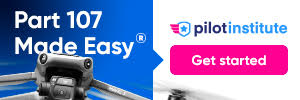I've struggled a lot with this. I have both and after using and testing I'm sticking with SRP.
May sound obvious but it's about how well the product works physical but more importantly optically.
SRP:
• The glass in SRP's is superior. While cleaning i noticed that even the edge of the glass is blackened to keep true to the light manipulation each filter is designed to do.
• The imagery is cleaner and more true for post color work.
• With a slip on lens (and they are tight as they should be) I can easily mark, install and then rotate the CP to its optimal position.
• They're not going to offer an ND4 because.... apparently not enough were asking for one and I agree.
So they're listening to their professional customers vs cranking out what the Jones' are doing just to make a buck.
• The have an ND16 that should be available very soon. No one has had the forethought to produce a reasonably priced ND16 for aerial work. Again they listen.
• Rumors have it (not confirmed but fingers crossed) that they'll have a graduated ND. ND16 on the very top to ND8 midway to bottom?
Therefore these guys understand optical needs for for aerial work specifically.
• Balance: Of course time will tell but because I love what these filters produce I started rethinking. IMHO...The force against the camera/gimbal at say a 25mph wind resistance (flying fast or from natural wind) is MUCH greater that 7g. This gimbal has been engineered with this force and more in mind because...it's an aerial camera on a quad. Because of the incredible quality I'm getting I've decided to "risk it", trust the technology of the P3 gimbal and fly. Iv'e seen the disclaimer on their site. Made me nervous but I'd do the same thing I guess since I'm offering and after market product. Faith on that one. All said and done, having an ND for aerial work is an absolute necessity to me, not a preference. So far my footage hasn't shown any signs of gimbal stress, shaking or hibernation. No visible or audible stress in movement, balance or maintaining level. So.... so far so good. Time will tell and I REALLY hope I'm not crying about this in two months.
PP have some inherent 101 production flaws:
• The threading wasn't thought through. My first set would not screw on more that 1/4 a turn because the anodizing process apparently wasn't properly factored in. (Second set was better but not perfected as there's still some rough spots when installing. I don't want to ruin the threads of the camera from repeatedly grinding it of and on.) Therefore after the coating was applied it changes the thread ratio... or makes the threads fatter IMHO. Was advised by PP to really use some force... uh, no thanks. Put a little oil on the threads? Next to seams where oil can seep into the camera or lens? Uh, no thanks. Shouldn't it just screw on like the stock UV does? Just sayin'.
• If you're farmiliar with how all CP's work you know they have a sweet spot. You have to rotate to that sweet spot on camera so the effect is active. If you can't rotate to that sweet spot a CP is rendered...useless. The PP CP isn't engineered, when fully seated, where the angle is in the perfect and correct CP position. So if you can get it on past a 1/4 turn you have to stop at the sweet spot leaving the filter 1/4, 1/2, 3/4 etc. from all the way seated. This means its subject to movement during flight as it's not tightly seated.
• The lenses are glued in. My CP has already popped out while gently cleaning. The glue seepage around the inside of all 3 is clearly visible as if it were applied with a caulk gun. Sloppy work for a piece of "optical equipment".
• Their ND8 isn't nearly as dark as the SRP ND8. If it existed the PP ND8 appears more like an ND5.8. So...who the heck is their "pro optics guy?"
I could go on but I'm disappointed and baffled at the lack of attention to things that, even a knuckle-head like me knows, should be a basic given with a product like this.





